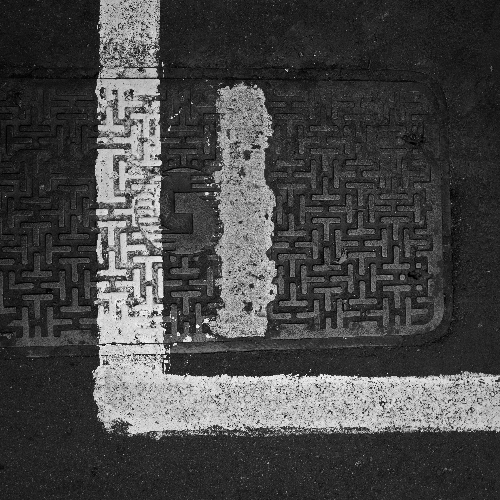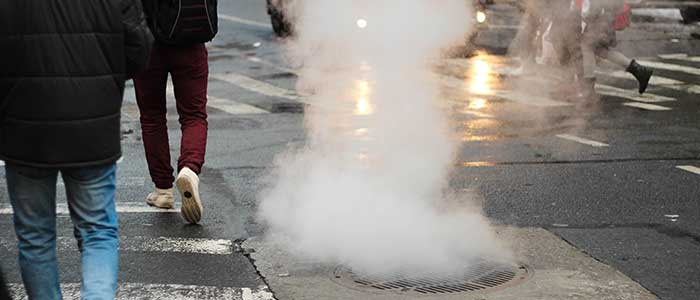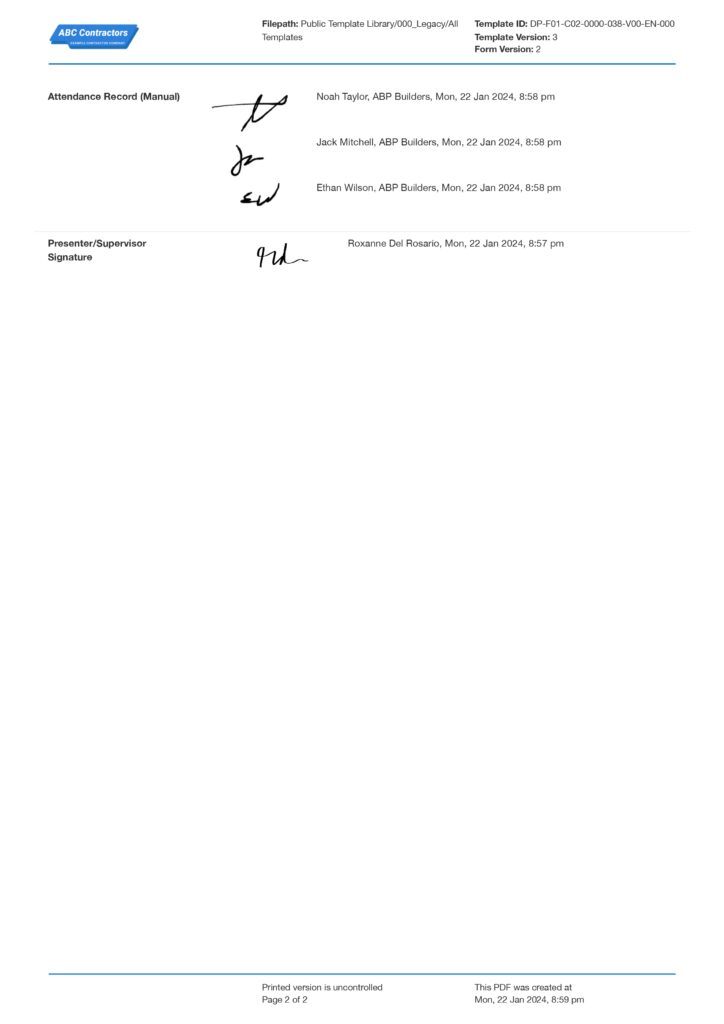Dashpivot Article – Safety Moment Confined Space
Safety Moment Confined Space
Here we'll dig deep into what a safety moment for confined space is, why such a high-risk environment need safety talks, how you can lead a proper safety moment to keep workers safe, and how to keep up with the regulations for compliance and overall workplace safety.

Table of Contents
Article Summary
- A Safety Moment document for confined spaces is a helpful tool that records the safety moments and brief discussions prior to working in confined spaces. It keeps record of the space's relevant, targeted, and different associated risks.
- Supervisors and team leaders can effectively lead safety moments by setting a single key safety message to establish one relevant message. Keep the discussion quick, use visuals, and finish with direct statements.
- To establish your relevant key safety message, select from the list of safety reminders for working in confined spaces which are applicable for the day's work as a guide.
- As per OSHA 1910.146, spaces that are considered Permit-Required Confined Space, are mandated to have permits before entries and other more requirements.
Why does working in confined spaces need a safety moment?
A Safety Moment is a 2 to 5-minute simple nudge or a quick tip that is surely effective in preventing accidents and fatalities in high-risk environments. With confined spaces being considered as high-risk environments, they require safety talks, permits, training, monitoring, and unique emergency plans before entry.
There are a lot of risks associated to working in confined spaces. Because there’s limited airflow passing through, anyone coming in lacks oxygen for breathing – and it doesn’t help that sometimes there’s presence of toxic gases in the space. Movement is heavily restricted in confined spaces, meaning limited in both entry and exit – which makes rescuing persons difficult. These spaces could be tanks, tunnels, crawl spaces, or anything similar possibly without any built-in lighting, no windows, no natural light coming in, and with particles that make it harder to see.
All of these are why confined spaces must be given extra attention, especially towards safety on the workers getting in the space.
Prior to starting work in confined spaces, it’s key to have short safety talks like having safety moments that assist in highlighting the safety precautions in place for working in confined spaces. A safety moment raises awareness to all workers, even not working on site, about the hazards and risks associated in getting in tight places where rescue is hard.
Formatting a brief but comprehensive safety moment document for confined spaces
Safety moments should be brief but comprehensive, which means having a good balance in highlighting the clear risks and hazards, and the urgency to stay safe and protected.
Additionally, confined spaces differ from one another. A tunnel has different associated risks involved compared to tanks, crawl spaces, manholes, etc. When environments differ, that means the safety moment should differ as well. Make sure that your safety moments stay targeted based on the type of confined space you’re working on by following this perfect example as shown below. You’ll see that tailored-to-fit, and editable safety moments continue to stay relevant and effective when addressing the varied hazards workers face in confined spaces or in whichever high-risk environment. Besides, safety moments needs to be quick – it’s only practical to use a method that quickens the pace, like this format below.

Use this Safety Moment for Confined Spaces for free
How to lead brief safety moments for works in confined spaces?
With safety moments being just brief but filled with quick and relevant reminders before starting works in confined spaces, it should require coherence, significance, and focus on the associated hazards. Supervisors, team leaders, safety officers, or anyone similar usually lead the safety moment. Here’s how you can fully and effectively lead a safety moment for your team, by putting these practical steps into mind:
Prepare by identifying the type of confined space
Each type of confined space has associated/relevant hazards, and no confined space has the same intensity or measurement of hazards.
Anticipate, don’t investigate
With all the possible hazards in place and with a safety moment just brief, you need to be selective with the contents. You’re not doing a full-on root cause analysis, but you are having a root-cause mindset to develop your key safety message. It’s more of answering what’s most likely to go wrong in the work in the day.
Setting a theme or a key safety message
In order to make a key safety message sharp, memorable, and easily actionable for the team, structure your safety moment to be specific or targeted to one safety principle that fully relates to the task at hand, or confined space location, that answers the question "What's most likely to go wrong?". Tailor the contents of your safety moment to the day’s work. The goal isn’t to cover each and every safety principle, you’re establishing one timely and relevant key safety message. A safety moment is not a training or a long meeting, it’s just a reminder that’s easy to remember, keeps the momentum going, and avoids overwhelming the workers with
Engaging the team but keeping it quick
Encourage participation but keep the pace tight and without dragging out the entire discussion. You could ask everyone one simple question that fully relates to the key safety message, let maybe one or two persons answer, or have them raise their hands, and keep it going. For example, asking “Who has checked their gas monitor?”, let them raise their hands, make sure that everyone has.
Using visuals and examples
One easy way to make safety moments memorable is having visuals. For example, there was a recent incident. You can show your phone or a printed photo of what was wrong and ask “What do you think went wrong here?”, and have one or two answer briefly, and then getting to the main key safety message.
Finishing safety moments with direct statements
Closing statements should be direct that sets a safety first mindset and reinforces leadership. For example, “One person at a time. Don’t rush.”, “If you don’t feel safe, speak up, and don’t go in.”, or “No permit, no entry.”
Other tips
Use a calm, strong, serious, and authoritative tone, and make eye contact to establish the seriousness of the safety moment. It's also key to document the safety moment so you can track the participation, know the patterns, and comply with safety regulations.
Think before entering: tips and reminders for confined space entry
Confined spaces hold serious and fatal risks and as a team lead or even a worker, it’s key to provide tips that you can use for your safety moments. Here are important reminders you can relay to your team members before getting in and when they’re in confined spaces:
Before getting in
- No valid permit, no entry. Permits are absolutely necessary for working in confined spaces because they indicate that the space has already been assessed for hazards prior to starting any work, the controls are in place, everyone knows their roles and responsibilities, the management is aware that there are people who will be working in the space, and many more. If there are hazards identified, they are classified as Permit-Required Confined Spaces meaning permits are mandatory, as per OSHA, which will be discussed a bit more later.
- Check for oxygen levels, if there are any toxic gases present, or any indications of flammable vapors. This way you can anticipate how long a person can stay in the space and the things to avoid sparking flame/fire. Also, ensure to provide proper airflow/ventilation so that buildup of potential harmful gases won’t suffocate the worker going in.
- Lockout/tagout any energy sources, if present, associated to the space.
- Conduct inspections on any equipment and tools to be used for entry.
- Rescue personnel must be on standby and ready for anything that might happen.
During entry
- All workers and personnel must be wearing the proper PPE that are tied to specific/associated hazards in the space.
- There should be constant communication between the workers in the space and those who are outside, whether via verbal, radio, or visual.
- The worker inside must continuously monitor their gas detector
- If long-period work is required in the space, it’s best to rotate workers and shifts.
Other important reminders
- Don’t enter on your own. There should always be a trained personnel on stand-by outside.
- When you experience anything unusual (safety and health-wise), exit immediately. Don’t ignore the near misses and symptoms, and report them immediately afterward. Read more on how to make a near miss report.
Spaces considered as Permit-Required Confined Space (PRCS), as per OSHA
A Permit-Required Confined Space (PRCS) is a classification defined by OSHA after assessing a space. Some spaces require permits, some don’t. Here are indicators that a space is permit-mandated as per OSHA regulations:
- The space is big enough for a worker to get in and perform the work/task.
- Entry and/or exit is restricted
- The space is not intended for workers to stay in long periods.
- The space has at least one of the hazards present: lack of oxygen (asphyxiation), toxic/harmful/flammable gases present, engulfment hazard, potential entrapment, etc.
What’s next after identifying the space is a PRCS? If it’s a PRCS, then:
- The workers and team lead must secure a permit before starting work.
- Anyone tasked to work inside and outside the confined space must all be trained and qualified.
- Rescue procedures must be in place, and any equipment to be used for rescue must be available and on stand-by.
Read more about indicators, requirements for practices, and the proper procedures for protecting employees in confined spaces here in OSHA’s 1910.146 - Permit-required confined spaces.
OSHA 2024 updates on confined space safety regulations
OSHA has only recently made updates and developments that concern the safety regulations in confined spaces.
For context, OSHA requires approval from the Office of Management and Budget (OMB) every couple of years to collect paperworks and information such as hazard assessment of confined spaces, entry permits, training records, and rescue procedures from companies. They use this data to know how these companies are managing job sites with confined spaces, to keep track of the employers meeting the safety standards, study the accidents and trends circling around confined spaces, and for general improvement in their confined space regulations.
The update is simply about OSHA extending the power to collect these data from companies and employers. They want to continue collecting information on certain safety-related paperwork for the purposes mentioned above.
Read more on OSHA's Permit-Required Confined Spaces Standard; Extension of the Office of Management and Budget's (OMB) Approval of Information Collection (Paperwork) Requirements and Confined Spaces in Construction Industry Standard; Extension of the Office of Management and Budget (OMB) Approval of Information Collection (Paperwork) Requirements.
Easy and quick compliance with safety moments and other safety discussions
Safety discussions should be quick, and the only thing people should worry about are making sure the safety contents are relayed properly, and not about the tedious documentation it comes along with. With how fast-paced industries are nowadays and how high-risk environments have so many hazards and risks to consider, maintaining proper safety discussions can be bothersome.
But with modern technology in the picture, companies across all industries, whether you’re in construction, manufacturing, mining, oil & gas, etc., you can simplify your safety discussions. Tools like a Safety meeting app, Safety moments app, Toolbox talk app, and Pre-job brief app make sure that key safety information are properly delivered across teams (especially workers exposed to the safety risks), documented, and reviewed regularly.
Make it easy for your teams and take away the administrative burden of manual data entry and heaps of paper that take up so much space (and headspace). All these safety discussion apps mentioned help you and your team maintain a culture of safety, while also staying compliant with standards and regulations.
Smarter and streamlined solutions for high-risk workplace safety
Modern workplaces need modern technology, not the traditional way. In order to keep up with the ever evolving risks across industries, companies need to have tools that aid them to work smarter, more efficiently, and faster to keep workers safe. Digital solutions are adaptive – it streamlines communication between workers (even teams from different locations) and automates documentation.
High-risk environments like confined spaces need permits before starting work, but what if work needs to be done ASAP? Even if it’s not rushed, you can use this Permit to work app and software to easily keep permits in your documents. Workers, team leads, supervisors, or even the higher management can easily access the documents and sign off digitally. Streamline hazard identification, assessment, employee assignment, and many more with a permit app.
Permit make sure that tasks check out every single thing and that management approves of the work, but there are uncontrollable risk and hazard. A Near miss reporting app enables workers to easily and accessibly log incidents that could have potentially caused them harm.
Summary of safety moments confined spaces
Working in confined spaces comes with fatal and serious risks, that why extra attention should be given and provided on the safety efforts to keep workers unharmed. Safety moments are short and direct safety discussions that remind workers on the key safety message in a day's work. Team leads should ensure that for safety messages to be easily digestible, they should communicate with clarity and confidence, to keep teams alert and awake. Furthermore, OSHA has a classification for permit-mandated confined spaces they call Permit-Required Confined Spaces (PRCS), where they require strict paperworks and procedures before work begins.
Frequently Asked Questions
Is a Safety Moment for confined spaces required under OSHA for all types of industries?
Safety moments are one of the best practices to keep safety a top priority in high-risk environments, especially when working in confined spaces. OSHA requires employers to ensure safe work practices and provide site instructions and discussions before entry, which is exactly what a safety moment is. Additionally, if a confined space is classified as a Permit-Required Confined Space (PRCS) by OSHA, you're required to have a permit for work and comply with safety regulations that keep workers safe at all times.
How are digital tools enhancing how people do safety moments and other safety discussions, like toolbox talks and pre-job briefs?
Technology is transforming safety moments, toolbox talks, pre-job briefs, and other safety discussions by using easier methods than using papers, like Dashpivot. Team leads can easily log participation online, document safety talks as they go, complete tasks faster, and keep data stored safety for future use, compliance, and studies. This leads to better data for insights, safer workplaces, and even faster compliance with regulatory bodies.
Does Sitemate offer templates for safety moments in confined spaces, and other similar documents related to confined spaces?
Yes – Sitemate offers easily editable templates that you can work with, like this Safety Moment template which you can tailor for working in confined spaces. Companies of all sizes, especially in construction, are using this template right now to streamline their safety moment for confined spaces. Aside from that, they're also using this Confined Space Permit template and this Confined Space Rescue Plan.
Related resources

Confined space permit
Streamline how you create, complete and approve confined space permits to keep confined space work moving forward safely.

Confined Space Rescue Plan
This confined space rescue plan template makes it easier to establish and adhere to confined space rescue plan checklists, requirements and procedures.

Safe Work Method Statement for Confined Spaces
Document, outline and share your confined space safety best practices using this safe work method statement template.

